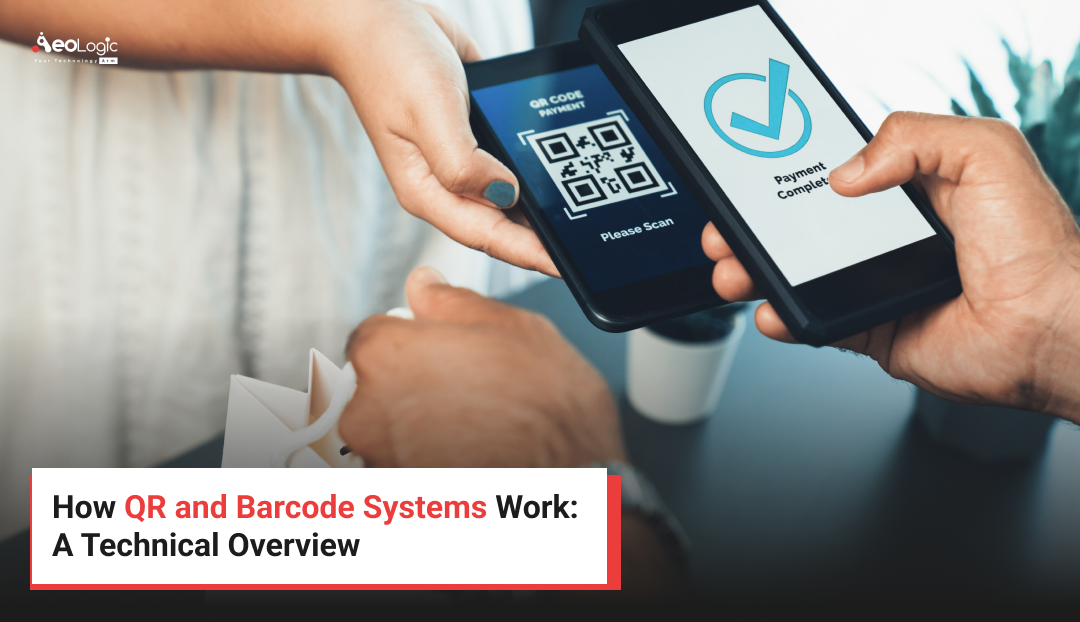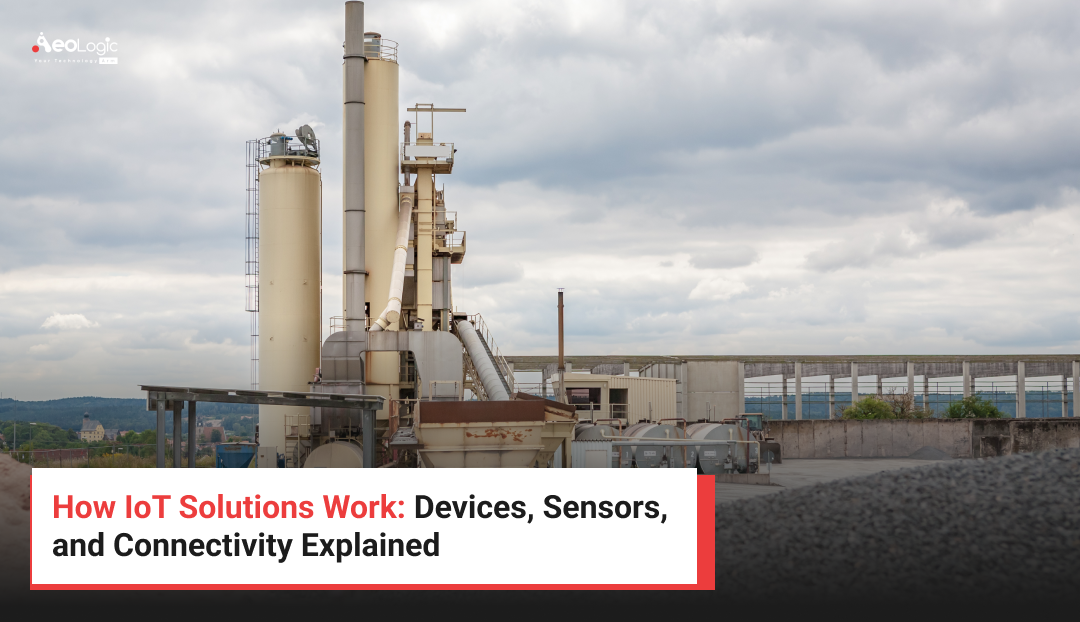Every product, package, or file that carries a black-and-white pattern — whether a straight barcode or a square QR code — is part of one of the most widely adopted data capture systems in the world. These patterns represent encoded information that can be instantly read by scanners or mobile devices. In today’s digital age, automation and identification have become critical to business success. From inventory tracking to payment systems, QR and barcode technologies help businesses achieve faster, error-free, and more efficient operations. Before we explore how QR and barcode systems work, it’s essential to understand that these systems are not just about lines and dots. They are complex mechanisms that transform visual patterns into digital information through advanced data encoding and decoding processes.
Understanding the Concept of Data Encoding
The foundation of both QR and barcode systems lies in data encoding. In simple terms, encoding means converting human-readable data — such as numbers, letters, or URLs — into a format that can be recognized and interpreted by a machine. Barcodes, this is done through a sequence of lines and spaces that represent characters. QR codes, a combination of black and white modules (squares) forms a matrix that stores more information.
The encoded data is then read by scanners or cameras that convert the visual pattern back into text or numbers. The process happens within seconds, allowing quick data access for operations like billing, logistics, and verification.
This simple yet powerful mechanism is what makes barcode and QR systems the backbone of modern data automation.
The Evolution of Barcode and QR Code Technology
Barcode technology has existed since the 1950s. The first commercial use was in supermarkets to automate checkout processes. Over time, barcodes became a global standard for tracking goods and managing inventory.
However, barcodes had limitations — they could only hold a small amount of data and required direct line-of-sight scanning. To overcome these restrictions, QR (Quick Response) codes were developed by Denso Wave in Japan in 1994.
QR codes offered higher data capacity, faster scanning speed, and multidimensional encoding. Unlike linear barcodes, QR codes can store URLs, alphanumeric data, and even binary information in a compact grid format.
Today, QR codes are used not just in logistics but also in marketing, digital payments, authentication, and personal identification. Both technologies continue to evolve with integration into AIDC (Automatic Identification and Data Capture) and IoT (Internet of Things) ecosystems.
How QR and Barcode Systems Work
To understand how QR and barcode systems work, it’s important to look at their functional stages. Both follow a sequence of data encoding, scanning, decoding, and integration.
1. Encoding Data
The process starts by encoding specific information — such as a product ID, link, or transaction number — into a visual pattern. Barcode generators or QR code creators use algorithms to translate text or numbers into black-and-white designs.
2. Printing or Displaying the Code
Once encoded, the code is printed on a surface (like packaging or labels) or displayed digitally (like on screens or receipts).
3. Scanning
Scanners or cameras read the visual pattern by shining light or capturing an image. The contrast between black and white areas reflects differently, allowing the device’s sensor to detect variations.
4. Decoding
Software in the scanner or mobile app interprets the captured signal and converts it back into readable text or data.
5. Integration
The decoded information is automatically fed into databases or applications, where it updates records, verifies transactions, or triggers specific actions.
This process — from creation to decoding — happens in milliseconds, which is why barcode and QR systems are preferred for instant identification and verification.
Technical Structure of Barcodes
Barcodes are one-dimensional (1D) data carriers. They consist of parallel lines and spaces that represent digits or letters.
Key Technical Elements of Barcodes:
-
Bars and Spaces: Represent binary values (1s and 0s) used to encode characters.
-
Start and Stop Patterns: Mark the beginning and end of a barcode to help scanners read it correctly.
-
Quiet Zone: A blank margin that allows the scanner to detect where the code starts.
-
Checksum Digit: Used for error detection and validation.
Types of Barcodes:
-
UPC (Universal Product Code): Common in retail for product labeling.
-
EAN (European Article Number): Used for international trade.
-
Code 128: Supports alphanumeric data; often used in logistics.
-
Code 39: Used in manufacturing and automotive industries.
When a barcode is scanned, a light beam reflects differently off the dark bars and light spaces. The reflected light is converted into electrical signals, which are then translated into digital data through decoding algorithms.
Barcodes are simple yet reliable systems that handle millions of daily transactions across industries.
Technical Structure of QR Codes
QR codes, on the other hand, are two-dimensional (2D) data carriers. Unlike barcodes, they can store information both horizontally and vertically, giving them higher data capacity.
Core Technical Components of QR Codes:
-
Finder Patterns: The three large squares at the corners of the QR code help scanners identify its position and orientation.
-
Alignment Patterns: Smaller squares ensure accurate scanning even if the code is distorted or placed on curved surfaces.
-
Timing Patterns: Define the data grid structure.
-
Data Modules: The black and white squares represent encoded binary data.
-
Error Correction Code (ECC): Allows data recovery even if part of the code is damaged or obscured.
-
Quiet Zone: Provides spacing between the QR code and surrounding graphics for accurate detection.
QR codes use the Reed-Solomon error correction algorithm, which ensures up to 30% of data recovery if damaged. This is one of the reasons why QR codes are widely used in outdoor or high-traffic environments where wear and tear are common.
QR Code Versions:
There are 40 versions of QR codes, each representing different module sizes and data capacities. Version 1 has 21×21 modules, while Version 40 contains 177×177 modules, capable of storing over 7,000 numeric characters.
This scalability makes QR codes suitable for applications ranging from simple labels to complex digital data encoding.
Hardware and Software Components in Scanning Systems
The performance of QR and barcode systems depends on both hardware and software working together.
Hardware Components:
-
Laser Scanners: Emit light to read barcodes.
-
CCD (Charge Coupled Device) Scanners: Use sensors to capture reflected light for greater precision.
-
Camera-Based Scanners: Capture images of QR or barcodes, suitable for mobile devices.
-
RFID and Hybrid Devices: Combine multiple scanning technologies for broader functionality.
Software Components:
-
Decoding Algorithms: Interpret the scanned data into readable text.
-
Database Integration: Connect scanned data with backend systems for real-time updates.
-
Error Detection: Validates scanned codes and corrects inaccuracies.
-
Mobile Applications: Enable scanning through smartphone cameras with built-in OCR and decoding tools.
This synergy of hardware and software is what enables QR and barcode systems to function seamlessly across multiple platforms and environments.
Benefits of Using QR and Barcode Systems
The popularity of QR and barcode systems comes from their simplicity, efficiency, and ability to fit seamlessly into any business environment. These systems have transformed how organizations manage data and handle operations.
1. Accuracy and Reliability
Manual data entry often results in mistakes. QR and barcode systems eliminate these errors by automatically capturing accurate information every time a code is scanned.
2. Speed and Efficiency
Scanning a QR code or barcode takes just seconds, significantly speeding up processes such as billing, inventory management, and logistics tracking.
3. Cost-Effective Implementation
Compared to other automation solutions, barcodes and QR codes are affordable. They require minimal infrastructure, making them accessible for businesses of all sizes.
4. Real-Time Data Access
Information from scanned codes updates instantly in databases or ERP systems, allowing real-time monitoring of assets, sales, and supply chains.
5. Easy Integration
QR and barcode systems integrate smoothly with existing software applications, enabling seamless data synchronization and reporting.
6. Enhanced Security and Traceability
Each barcode or QR code contains unique identifiers, making it easier to trace items, detect counterfeits, and maintain secure tracking across industries.
7. Space Efficiency
QR codes can store large amounts of data in a compact format, saving space on packaging or documents while providing more functionality.
8. Environment-Friendly
By reducing the need for paper records and manual documentation, QR and barcode systems contribute to sustainability efforts across organizations.
These advantages make QR and barcode systems indispensable tools in digital transformation strategies for businesses worldwide.
Applications Across Industries
QR and barcode technologies have versatile applications across different sectors. Their reliability and simplicity make them an integral part of business operations globally.
1. Retail and E-Commerce
Barcodes have long been essential in retail for product labeling and checkout scanning. In e-commerce, they ensure accurate order fulfillment, faster dispatch, and seamless returns. QR codes enhance the shopping experience by linking customers to websites, product details, or promotions through mobile scanning.
2. Manufacturing
Manufacturers use barcodes and QR codes for component tracking, production management, and quality assurance. Every part or product can be traced throughout its lifecycle, ensuring transparency and accountability.
3. Logistics and Supply Chain
QR and barcode systems enable real-time tracking of goods across supply chains. Packages can be scanned at every stage — from warehouses to delivery — ensuring visibility and reducing losses.
4. Healthcare
Hospitals and clinics use barcodes and QR codes to manage patient data, medication tracking, and laboratory samples. By automating identification, these systems improve patient safety and reduce administrative workload.
5. Education
Institutions use QR codes for attendance, event registration, and sharing digital materials. This promotes efficiency and reduces paper usage.
6. Marketing and Customer Engagement
QR codes have revolutionized marketing by bridging offline and online channels. Customers can scan codes to access websites, offers, or multimedia content instantly.
7. Banking and Payments
QR codes have made digital payments more convenient. Mobile banking apps use them for secure, instant transactions without the need for cards or cash.
8. Government and Public Administration
Governments use barcode and QR systems for document management, identity verification, and asset tracking to streamline operations.
9. Agriculture and Food Industry
From farm to fork, QR codes track food products’ origins, quality, and safety, promoting transparency for consumers.
These examples illustrate how the flexibility of QR and barcode systems supports both traditional and digital workflows across industries.
Cost to Implement QR and Barcode Solutions
Implementing QR and barcode systems is cost-effective compared to most automation technologies. The cost depends on the scale of deployment, hardware needs, and software integration.
1. Hardware Costs
Basic barcode scanners start around $100–$200, while industrial-grade scanners or mobile-enabled readers may cost between $500–$2,000. Most modern smartphones can scan QR codes without additional hardware.
2. Printing and Labeling
Printing QR or barcode labels costs only a few cents per unit. Thermal printers designed for barcode labels range from $300–$2,000, depending on volume and speed.
3. Software Integration
Custom software for generating, scanning, and integrating codes with business systems can range between $5,000 and $50,000, depending on complexity.
4. Cloud and Database Management
For larger enterprises, maintaining databases or cloud synchronization adds recurring costs of $50–$500 per month, depending on data volume.
5. Maintenance and Training
Routine maintenance and staff training generally cost around 10–15% of the total project annually.
Even with these costs, the return on investment is rapid — most businesses recover the implementation expenses within 6 to 12 months due to increased accuracy and operational speed.
Future Trends in QR and Barcode Technology
The evolution of QR and barcode systems continues with advancements in automation, connectivity, and data security. These innovations are shaping the future of how businesses manage and share information.
1. Integration with IoT and AIDC Systems
QR and barcode technologies are merging with AIDC and IoT ecosystems for real-time asset tracking and intelligent data analysis. This integration allows smart devices to capture and transmit data automatically.
2. Blockchain-Based Verification
To ensure data authenticity, blockchain will be used to record and verify each scan. This will enhance transparency and reduce counterfeit risks, especially in supply chains.
3. Dynamic QR Codes
Unlike static codes, dynamic QR codes allow information to be updated even after printing. Businesses can change URLs, campaigns, or details without redesigning the code.
4. Mobile-First and AI-Powered Scanning
AI-powered scanning will improve detection speed and accuracy, even in poor lighting or damaged codes. Smartphones will continue to be the primary tool for QR-based payments and authentication.
5. 3D Barcodes and Enhanced Data Capacity
New formats like 3D and color barcodes will store more information while maintaining compact sizes. These will be especially useful in industries that require detailed tracking data.
6. Augmented Reality (AR) Integration
Future marketing campaigns will combine QR codes with AR experiences, providing interactive content and immersive brand engagement.
7. Sustainability in Printing
Eco-friendly label materials and reusable tags are being developed to reduce environmental impact, aligning with global sustainability efforts.
As technology evolves, QR and barcode systems will continue to be essential in enabling efficient, secure, and connected business ecosystems.
Final Words
Understanding how QR and barcode systems work helps us realize how these simple yet powerful technologies have transformed business operations worldwide. By encoding information into machine-readable patterns, they make data collection fast, reliable, and error-free.
From retail checkouts and logistics tracking to digital payments and healthcare management, QR and barcode systems are vital for accuracy and automation. Their ability to integrate seamlessly with cloud platforms, IoT, and AIDC solutions ensures they remain relevant in the future of digital transformation.
As businesses continue to modernize, adopting these systems is no longer optional — it’s essential for efficiency, cost savings, and customer satisfaction.
Get in touch with Aeologic Technologies today to implement smart, scalable QR and barcode systems that enhance accuracy, speed, and data visibility across your business operations.
FAQs
1. What are QR and barcode systems?
QR and barcode systems are technologies used to encode data into machine-readable visual formats for quick identification, tracking, and automation.
2. How do QR and barcode systems work?
They work by converting information into visual patterns (lines or grids). Scanners or cameras capture these patterns and decode them into readable data within seconds.
3. What is the main difference between QR codes and barcodes?
Barcodes are one-dimensional and store limited data, while QR codes are two-dimensional and can store larger amounts of alphanumeric or binary information.
4. Where are QR and barcode systems used?
They are used in retail, logistics, manufacturing, healthcare, payments, and marketing for automation, tracking, and data management.
5. Are QR and barcode systems cost-effective?
Yes. They are inexpensive to implement and maintain, offering quick ROI through improved efficiency and reduced manual errors.
6. Can QR and barcode systems integrate with ERP or CRM platforms?
Yes. Modern systems can connect with enterprise software for real-time updates and centralized reporting.
7. How secure are QR codes?
QR codes can include encryption or blockchain verification for secure data transfer, especially in payment systems.
8. What are dynamic QR codes?
Dynamic QR codes allow data updates even after printing, offering flexibility for marketing and product management.
9. What industries benefit most from these systems?
Retail, logistics, healthcare, and manufacturing are the top industries using QR and barcode technologies to improve accuracy and workflow.
10. What is the future of QR and barcode technology?
Future developments will focus on AI integration, IoT connectivity, 3D codes, and blockchain-based security for smarter, more sustainable applications.

Passionate about breaking down complex tech into simple ideas. Covers everything from AI and software development to gadgets and emerging tech trends.






